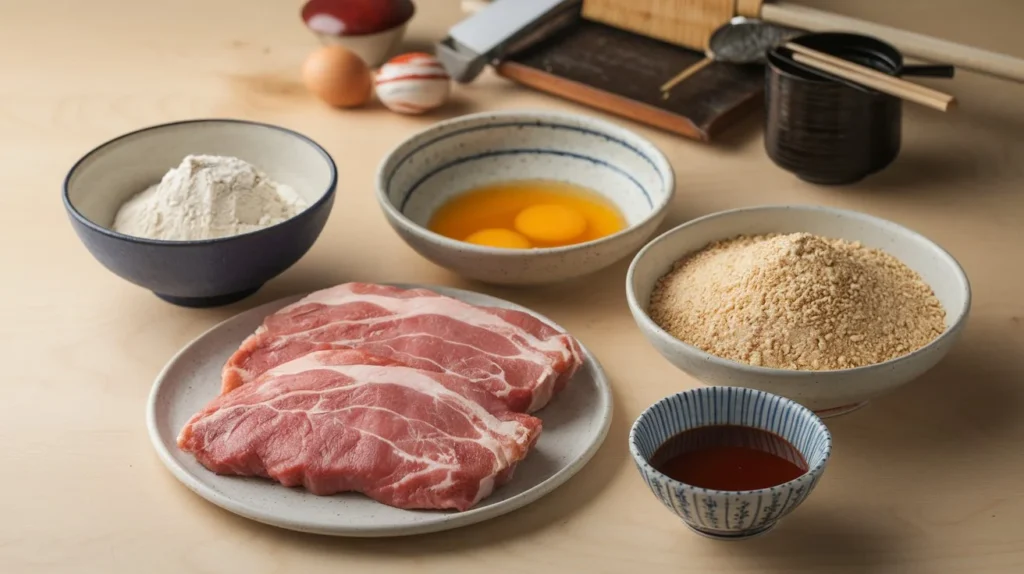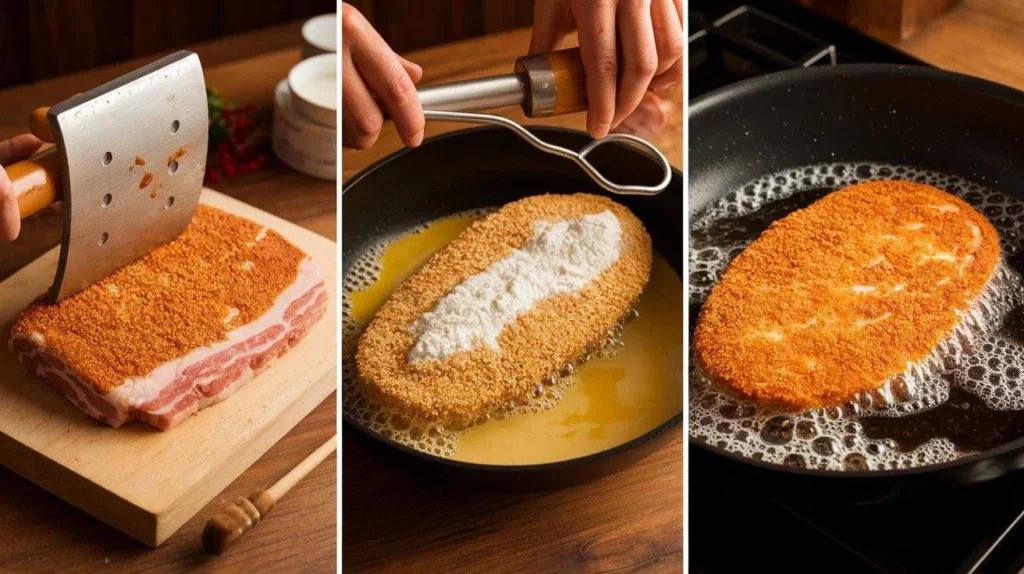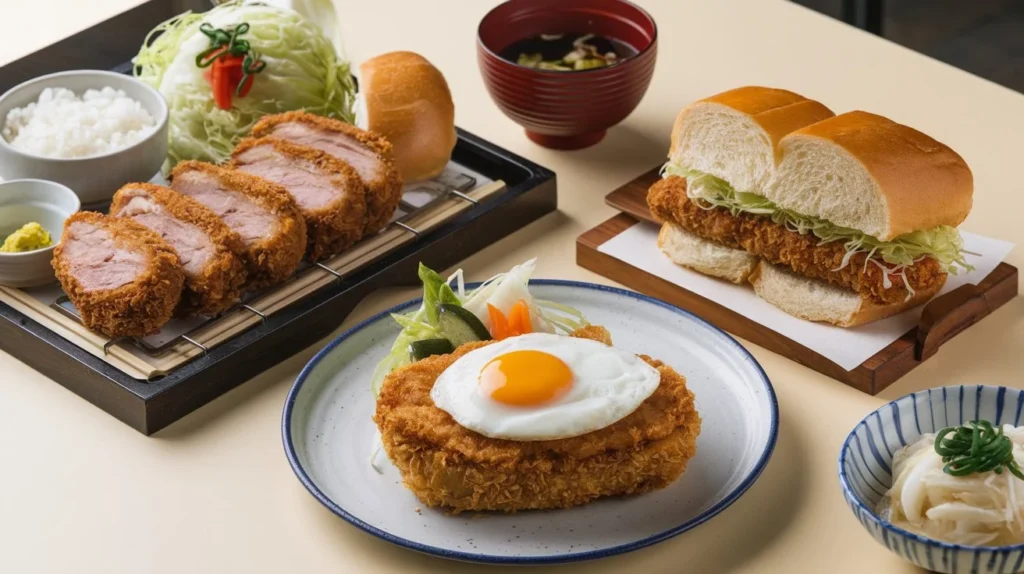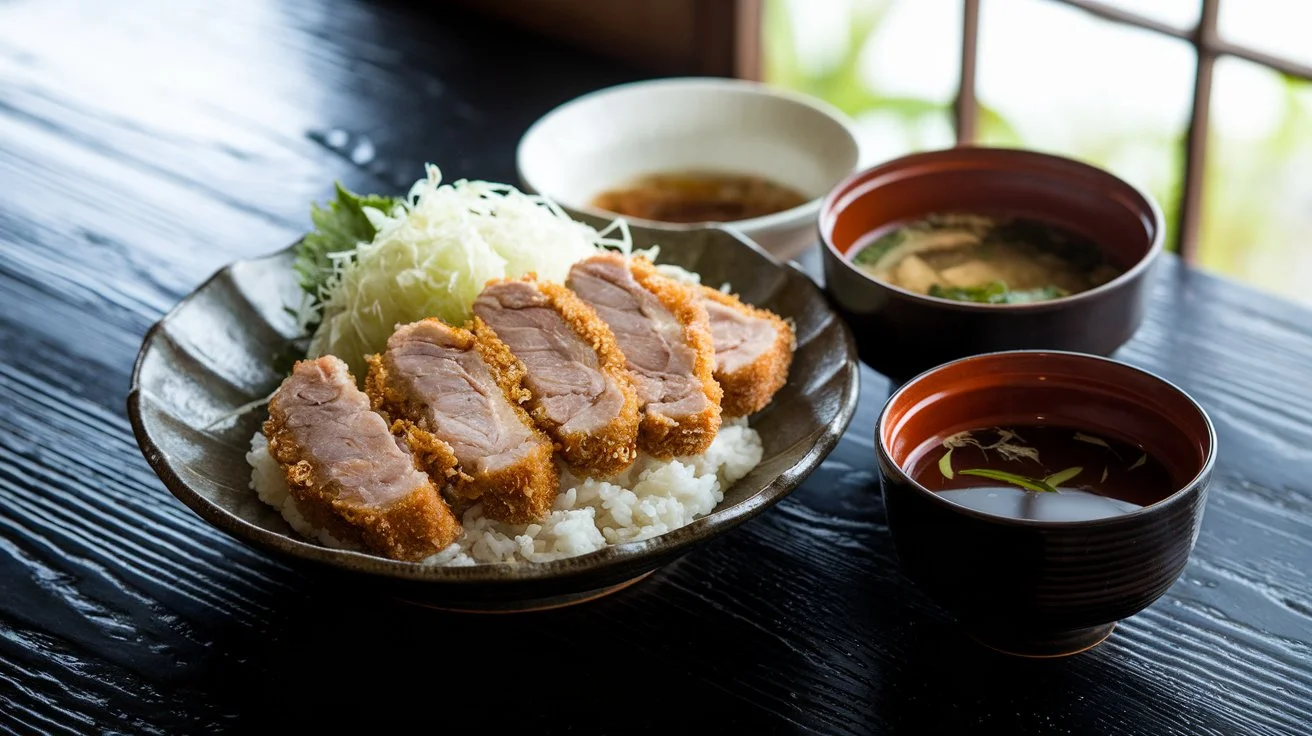If you’re craving something crispy, savory, and delicious, look no further than Japanese pork katsu cutlets. The perfect combination of tender, juicy pork encased in a crunchy panko breadcrumb crust, this dish is sure to make a lasting impression on your taste buds. Whether you’re cooking for a special occasion or simply want to try something new, authentic Japanese pork katsu Cutlets is a fantastic choice.
This article will guide you through everything you need to know about making authentic Japanese pork katsu Cutlets, from selecting the right ingredients to achieving the perfect crispy coating. By the end, you’ll be able to create restaurant-quality pork katsu cutlets in the comfort of your own home. Ready to dive in? Let’s get started.
Table of Contents
What is Pork Katsu?

Before you start cooking, it’s essential to understand what pork katsu actually is. This dish, also known as tonkatsu in Japan, consists of a breaded and deep-fried pork cutlet, usually served with shredded cabbage, rice, and a tangy tonkatsu sauce. The pork katsu you know today has evolved from Western-style breaded and fried dishes, but it has become a beloved comfort food in Japan over the years.
The key to authentic pork katsu is in the details: the type of pork, the method of breading, and the cooking technique. It’s all about achieving that perfect balance between a juicy interior and a crispy exterior.
Essential Ingredients for Authentic Japanese Pork Katsu Cutlets

Creating a truly authentic pork katsu starts with the right ingredients. Here’s a breakdown of what you’ll need:
Pork Cutlets
The first and most important ingredient is, of course, the pork. The best cuts for making pork katsu are either pork loin or pork tenderloin. These cuts are tender, flavorful, and hold up well when fried. Pork loin is slightly leaner, while pork tenderloin is more tender but can be pricier. Either cut will work perfectly for your katsu.
Breadcrumbs: Panko vs. Regular
The secret to the crispy coating of pork katsu lies in panko breadcrumbs. Unlike regular breadcrumbs, panko is light, airy, and much crispier. The unique texture of panko creates a perfectly crunchy exterior when fried. If you can’t find panko at your local store, you can make your own by drying out slices of white bread and processing them into coarse crumbs.
The Breading Setup
To achieve the perfect breading, you’ll need three components:
- All-purpose flour: This helps the egg adhere to the pork.
- Eggs: Beaten and used as a binder for the breadcrumbs.
- Panko breadcrumbs: The final layer that creates the crisp, golden coating.
Tonkatsu Sauce
The finishing touch to pork katsu is the tonkatsu sauce. This thick, tangy sauce is a key part of the dish and balances the savory richness of the pork. You can buy pre-made tonkatsu sauce, or if you prefer, make your own by mixing ketchup, Worcestershire sauce, soy sauce, and a few other ingredients. It’s easy to make and adds that authentic flavor that ties the whole dish together.
| Ingredient | Purpose |
|---|---|
| Pork loin or tenderloin | Tender, juicy cut of pork ideal for frying |
| Panko breadcrumbs | Creates a light, crispy coating |
| All-purpose flour | Used to dredge the cutlets |
| Eggs | Binds the breading ingredients to the pork |
| Tonkatsu sauce | Complements the pork with a tangy, sweet flavor |
Step-by-Step Instructions for Making Authentic Japanese Pork Katsu Cutlets
Now that you have your ingredients ready, it’s time to get cooking. Follow these steps carefully to create authentic Japanese pork katsu Cutlets that rivals your favorite Japanese restaurant.
1. Prepare the Pork
Start by trimming any excess fat from the pork cutlets. If you’re using pork tenderloin, you can leave some fat on for added flavor. If you’re using pork loin, it may have a little fat cap, which you can leave or trim based on your preference.
Using a meat mallet, gently pound the pork to an even thickness. This helps the cutlets cook more evenly and stay tender during frying. Once the pork is prepped, season it lightly with salt and pepper on both sides.
2. Set Up the Breading Station
Now it’s time to bread the pork. Set up three shallow dishes:
- One with all-purpose flour
- One with beaten eggs (about 2 eggs should be enough)
- One with panko breadcrumbs
Start by dredging each pork cutlet in the flour, making sure to shake off any excess. Then dip it into the beaten eggs, ensuring it’s fully coated. Finally, coat the cutlet in panko breadcrumbs, pressing lightly to make sure the breadcrumbs adhere. Repeat this process for each pork cutlet.
3. Fry the Pork Cutlets

Heat about 1 to 1.5 inches of vegetable oil in a deep frying pan over medium-high heat. The oil should be around 350°F (175°C) for perfect frying. To check the temperature, drop a small piece of panko into the oil if it bubbles and crisps up quickly, you’re ready to fry.
Carefully place the breaded pork cutlets into the hot oil, being careful not to overcrowd the pan. Fry each cutlet for 4-5 minutes per side, or until golden brown and crispy. Be sure to adjust the heat if the oil gets too hot or too cool.
Once the pork cutlets are golden brown and cooked through, transfer them to a paper towel-lined plate to absorb excess oil.
4. Slice and Serve
Let the pork cutlets rest for a couple of minutes before slicing them. This ensures the juices stay inside, keeping the pork moist. Slice the cutlets into strips and serve immediately with a drizzle of tonkatsu sauce.
Serving Suggestions: How to Enjoy Your Japanese Pork Katsu Cutlets
Now that your pork katsu is ready, it’s time to enjoy! There are many ways to serve this delicious dish.
Classic Tonkatsu Set Meal
The most traditional way to enjoy pork katsu is as part of a tonkatsu set. Serve the crispy pork with steamed rice, a side of shredded cabbage, and a bowl of miso soup. This is the standard Japanese comfort food meal.
Katsu Sando
For a fun twist, try turning your pork katsu into a sandwich—katsu sando. Serve the pork cutlet between two slices of soft white bread, add some shredded cabbage and tonkatsu sauce, and you have a delicious handheld meal.
Topping Variations
Add a fried egg on top of your pork katsu for a rich, indulgent treat. Or pair it with some pickled vegetables to add a refreshing tang to balance the richness of the pork.
Conclusion: Enjoy the Crispy Perfection of Japanese Pork Katsu Cutlets

Now that you know how to make authentic Japanese pork katsu Cutlets, it’s time to roll up your sleeves and get cooking. This crispy, savory dish is perfect for any occasion, whether you’re hosting a dinner party or enjoying a quiet meal at home. By following the steps in this article, you’ll be able to serve up pork katsu that rivals your favorite Japanese restaurants.
So, go ahead and try making this dish today—you won’t regret it! And remember, the crispy golden perfection of pork katsu is just a few steps away.
Frequently Asked Questions (FAQ) about Japanese Pork Katsu
What’s the best cut of pork for making katsu? (H3)
The best cuts of pork for pork katsu are pork loin and pork tenderloin. Both cuts are tender and cook quickly, making them perfect for frying. Avoid fatty cuts like pork belly, as they can become too greasy when fried.
Can I make chicken katsu instead?
Yes, chicken katsu is just as popular as pork katsu in Japan. You can follow the same recipe but use chicken breasts or chicken thighs in place of pork. The cooking method remains the same.
How can I make homemade tonkatsu sauce?
You can make your own tonkatsu sauce by mixing ketchup, Worcestershire sauce, soy sauce, sugar, and a little mustard. Adjust the quantities to taste, and you’ll have your own homemade sauce in no time.
Can I bake pork katsu instead of frying it?
While frying is the traditional method for making pork katsu, you can bake it in the oven at 400°F (200°C) for 20-25 minutes. It won’t be as crispy as the fried version, but it’s a healthier option.

